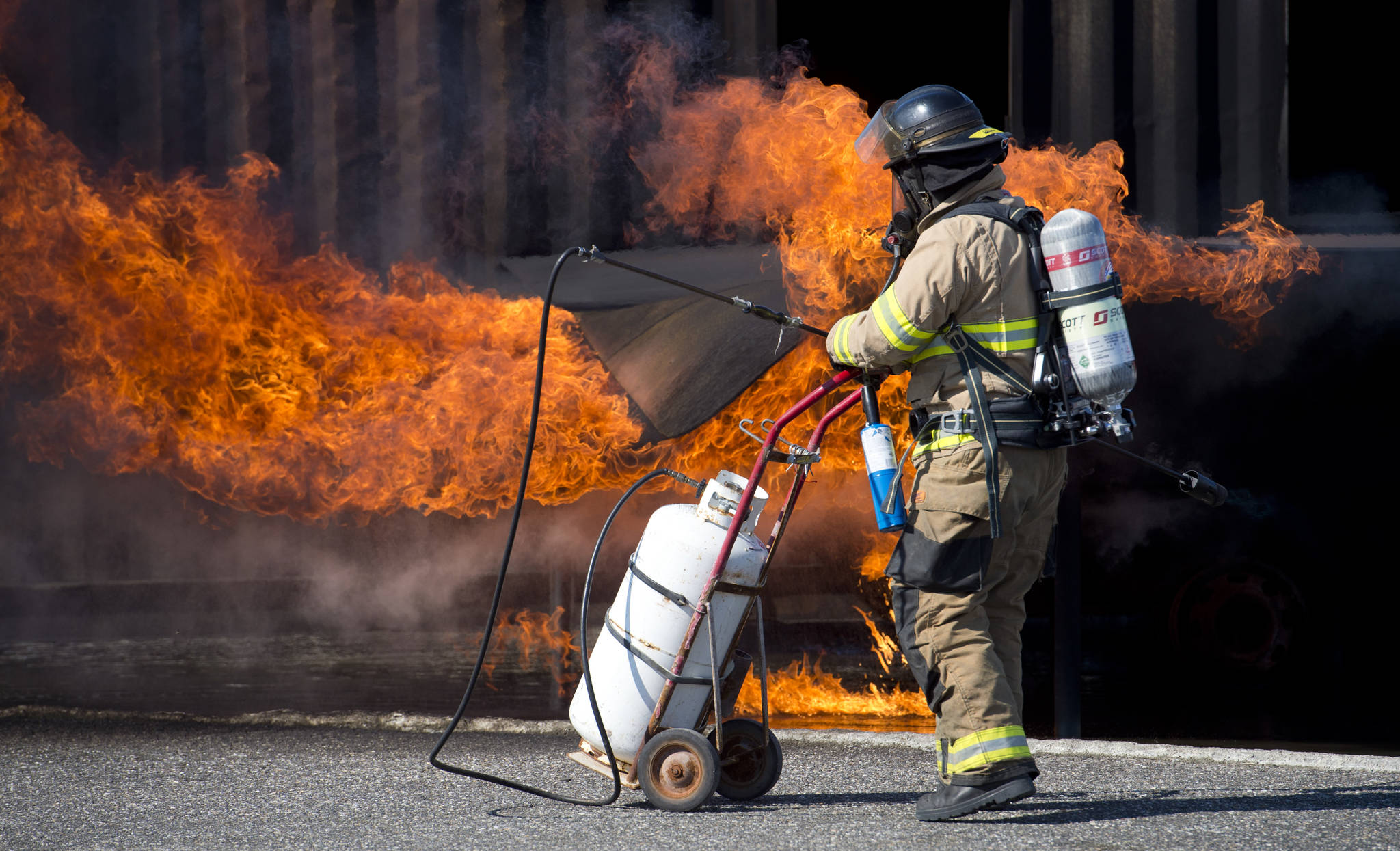As part of their training, firefighters often run simulations with scenarios designed to help them practice their skills in a semi-realistic setting, rescuing “victims” from burning “houses” or extricating accident victims from mangled vehicles.
But aircraft rescue and firefighting adds several layers of complexity to any potential call-out. Capital City Fire/Rescue members have to be certified by the Federal Aviation Administration to do aircraft rescue and firefighting (ARFF) at the Juneau International Airport. And part of that certification requires an annual training.
The need for ARFF-qualified firefighters has doubled for CCFR, explained Assistant Fire Chief Ed Quinto, because Alaska Airlines had increased the length of its aircraft and the number of its scheduled departures. That bumped up the airport’s ARFF index, which in turn means CCFR had to add staffing and training.
CCFR used to run one truck with a backup, but now is required to have two manned at all times, Quinto said.
The FAA mostly funded the purchase of the new truck, which was longer, which meant the fire station needed to rebuild a portion of the building to house it, that also was mostly paid for by FAA.
“We are required to have two trucks on the field in the event of a crash,” Quinto said.
The designated response time from the station to the middle of field for the first truck is within three minutes, and the second truck within 4 1/2 minutes.
“It doesn’t give you much time,” Quinto said. “You”ll see (in training) how fast these guys have to move.”
During Thursday’s training, firefighters simulated cutting into an aircraft and rescuing a passenger, as well as extinguishing a fire inside the aircraft. To run the simulation, they use propane and diesel, since planes use diesel fuel. Two firefighters from Yakutat were on hand to participate in the training session as well. Some of the firefighters wore special airport suits, with foil that helps deflect a little more heat.
In one scenario being run, CCFR Captain Noah Jenkins drove the truck, trying to get upwind of the fire and out of the smoke before spraying a mixture of foam and water at the burning “wing” of the “airplane” (metal storage container). He then laid down a blanket of foam on the tarmac to protect against the possible ignition of vapor from any fuel spill.
The ARFF truck carries 1,500 gallons of water and 220 gallons of foam, as well as 500 pounds of dry chem — similar to what is in a fire extinguisher — which is better for fighting aircraft fires. It also has a piercing nozzle designed to poke through the fuselage of a plane.
Part of the required annual training involves sampling the foam mixture to make sure the percentage is correct and the equipment is properly calibrated.
The FAA mandates the training and helps pay for it, Jenkins explained. Every three years, CCFR firefighters travel up to Kenai to a bigger fire training facility, where they can practice on bigger pit fires.
Quinto said 21 of CCFR’s firefighters are currently qualified to operate the ARF trucks.
But, he said, “In the event of a real emergency, we would throw everything in the city at it.”
Contact reporter Liz Kellar at 523-2246 or liz.kellar@juneauempire.com.

